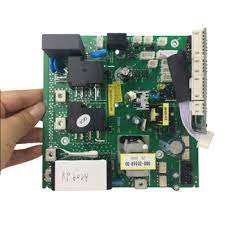PCB & PCBA Solar Hybrid Inverter PCB Board
Name: PCB & PCBA Solar Hybrid Inverter PCB Board
Origin: China
Certified: UL, CE, RoHS
Copper Thickness: 1 oz
Base Material: FR-4/aluminum/ceramic/cem-3/FR-1
Application: Electronics Device
Board Thickness: customized
What is PCB & PCBA Solar Hybrid Inverter PCB Board?
A PCB & PCBA Solar Hybrid Inverter PCB Board is integrated with many technologies and components using the sophisticated electronic manufacturing technique known as hybrid PCB assembly. A solar hybrid inverter is a machine that transforms solar energy into electrical current. It may be utilized in solar power systems for homes, businesses, and industries. It combines assembly techniques using (THT) and (SMT). It also enables the integration of various elements and features. With hybrid PCB assembly, you have the option to combine SMT’s advantages of high component density and compactness with THT’s advantages of reliable mechanical connections and greater power handling capacity.
It is perfect for applications where a variety of components with different requirements are required because of this combination. SMT components are placed and soldered on one side of a hybrid PCB during assembly, while THT components are inserted via pre-drilled holes on the other side and soldered manually or using wave soldering methods. A broader variety of components are possible when SMT and THT are combined. It consists of ICs, transformers, connections, capacitors, resistors, and more.
Applications for PCBs and PCBAs Inverter Solar Hybrid PCB Board:
A Solar Hybrid Inverter depends heavily on its (PCB) and (PCBA). Following are some of the main applications and duties of PCB and PCBA in a solar hybrid inverter:
-
Power management:
In a solar hybrid inverter, the PCB is in charge of power management. It offers the circuitry required for managing and regulating the power flow from the battery bank, solar panels, and grid connection. The PCB makes effective power conversion possible, enabling maximum energy efficiency and smooth switching between various power sources.
-
Communication Interface:
The solar hybrid inverter may link to other systems or monitoring platforms via communication interfaces on PCBs like RS485, Ethernet, or Wi-Fi. These interfaces enable integration into smart grid systems, remote monitoring, data logging, and firmware upgrades.
-
Inverter Control:
Solar hybrid inverter’s inverter component’s control circuitry is integrated into the PCBA as the inverter component. It has microcontrollers, integrated circuits, and other electronic parts that manage how DC (Direct Current) electricity from the solar panels or battery bank is changed into AC (Alternating Current) power for use in electrical appliances and grid connection.
The positive aspects of hybrid PCB assembly:
Flexibility for including a variety of components, including both SMT and THT components, is provided by hybrid assembly. This makes it possible to include components with various form factors, power ratings, and specialized functionality on a single PCB, meeting the requirements of a variety of application requirements.
- In comparison to conventional THT-only assemblies, hybrid assemblies may accommodate more components thanks to the use of SMT technology. Compact PCB designs are made possible as a result, which is advantageous for applications with limited space.
- THT components offer improved mechanical stability and durability since their leads flow through pre-drilled holes and are connected on the PCB’s other side. Hybrid PCBs are thus appropriate for use in applications that call for strong connections, resistance to mechanical stress, or exposure to vibrations.
- PCB & PCBA Solar Hybrid Inverter PCB Board offers design flexibility, allowing engineers to optimize the PCB’s architecture and functionality. Greater flexibility in component placement, routing, and temperature control are made possible by combining SMT and THT technologies. Additionally, this leads to increased design efficiency all around.






